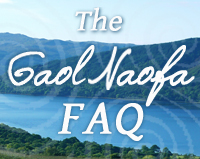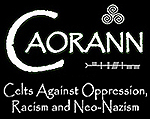Two new videos: Grianstad an Geimhridh and Hogmanay
December 15, 2014
Rounding off our series of videos on the festivals of the Gaelic year, we now have the final two installments which are covering the Midwinter period. In spite of the fact that the festivities at this time of year aren’t Gaelic in origin, they’ve come to be important occasions and have taken on many Gaelic elements in the ways they’re celebrated, which means that some of us may choose to observe Midwinter celebrations with friends and family in a secular, or more culturally-focused way.
As with our other videos, we take a look at the origins of the festivities and how they might be celebrated by Gaelic Polytheists today, and because of the concentration of celebrations that can be found at this time of year we’ve split them into two separate videos. First we have Grianstad an Geimhridh — The Winter Solstice, covering the roots of the festivities as evidenced by the ancient, pre-Celtic monuments like Newgrange and Maes Howe (which are aligned to the winter solstice), through to the Christian and Norse influences with Christmas, the peculiar and uniquely Gaelic traditions surrounding Saint Stephen’s Day, called Lá an Dreoilín (or Wren Day) in Ireland, and the traditions of the Yule log, the latter of which is identified with the Cailleach in Scotland.
Our second video takes a look at the secular New Year, with the Scottish celebrations of Hogmanay (New Year’s Eve) at the forefront. While Gaelic Polytheists might view the new year as beginning with Samhain, some of us may also choose to observe the secular new year, perhaps especially those of us who are Scottish-oriented in our practices. The new year only shifted to January 1st in 1600 (in Scotland; 1752 for Ireland), but Scotland’s complex religious history, which saw Christmas being effectively banned for four hundred years, means that the New Year has long been one of the most eagerly anticipated and celebrated dates in the modern calendar. As with any other liminal period in the Gaelic festival year, Hogmanay sees a concentration of protective rites and communal feasting, but while the original reasons for its popularity (the banning of Christmas) are no longer a factor, it has arguably come to be a celebration of culture and heritage as much as it might be a good excuse for a party.
Over all, the focus of the traditions that are attached to this time of year are on the family (whatever that might mean to you) and loved ones, and in appreciating the warmth and light of the hearth and home in the depth of the winter cold and darkness. As the secular year comes to a close, as the days begin to lengthen once again, Gaol Naofa would like to wish everyone a happy and prosperous new year. “Yule gude and yule gere, Follow de trew da year.”
Fàs is gnàths is toradh.
Filed under: Signal Boost







